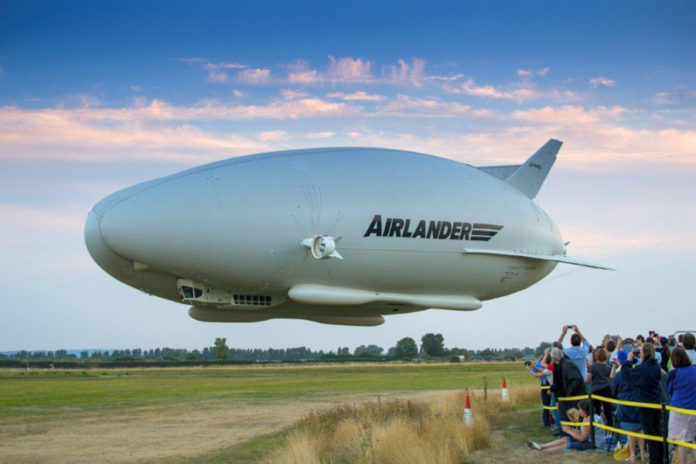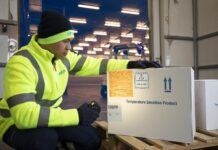

A partnership of Hybrid Air Vehicles, Collins Aerospace and the University of Nottingham has won grant funding to develop electric propulsion for the Airlander 10.
Funding in excess of £1 million from the UK Aerospace Research and Technology Programme will go on the project, named E-HAV1 to deliver a full-sized prototype 500kW electric propulsor.
The technology will be directly applicable to a future Airlander 10, with the goal of replacing its fuel-burning forward engines as the first step towards an all-electric version.
Combining lift from helium, aerodynamic lift and vectored thrust helps reduce fuel burn, and the integration of electric forward propulsors will increase this advantage.
For the E-HAV1 project, HAV will bring aircraft design experience, Collins is an expert in electric power system development and the University of Nottingham specialises in electric propulsion research and testing.
Stephen McGlennan, CEO of HAV says reducing carbon footprint is a major challenge facing the aviation industry.
He says: “While Airlander 10 is already helping customers Rethink the Skies with incredible efficiency, we have to find ways of further reducing the impact we have on our environment. This project will move us closer to our goal of zero-carbon aviation.”
Marc Holme, motor drive systems engineering director at Collins Aerospace says: “Together, we’re developing innovative technologies that will pave the way for the hybrid-electric and all-electric aircraft of the future.”
Professor Pat Wheeler, head of the University of Nottingham’s power electronics, machines and control research group says: “We are really looking forward to the exciting challenges of applying our technological knowledge of electrical machines, power electronics and power systems to the Airlander propulsion application.”












